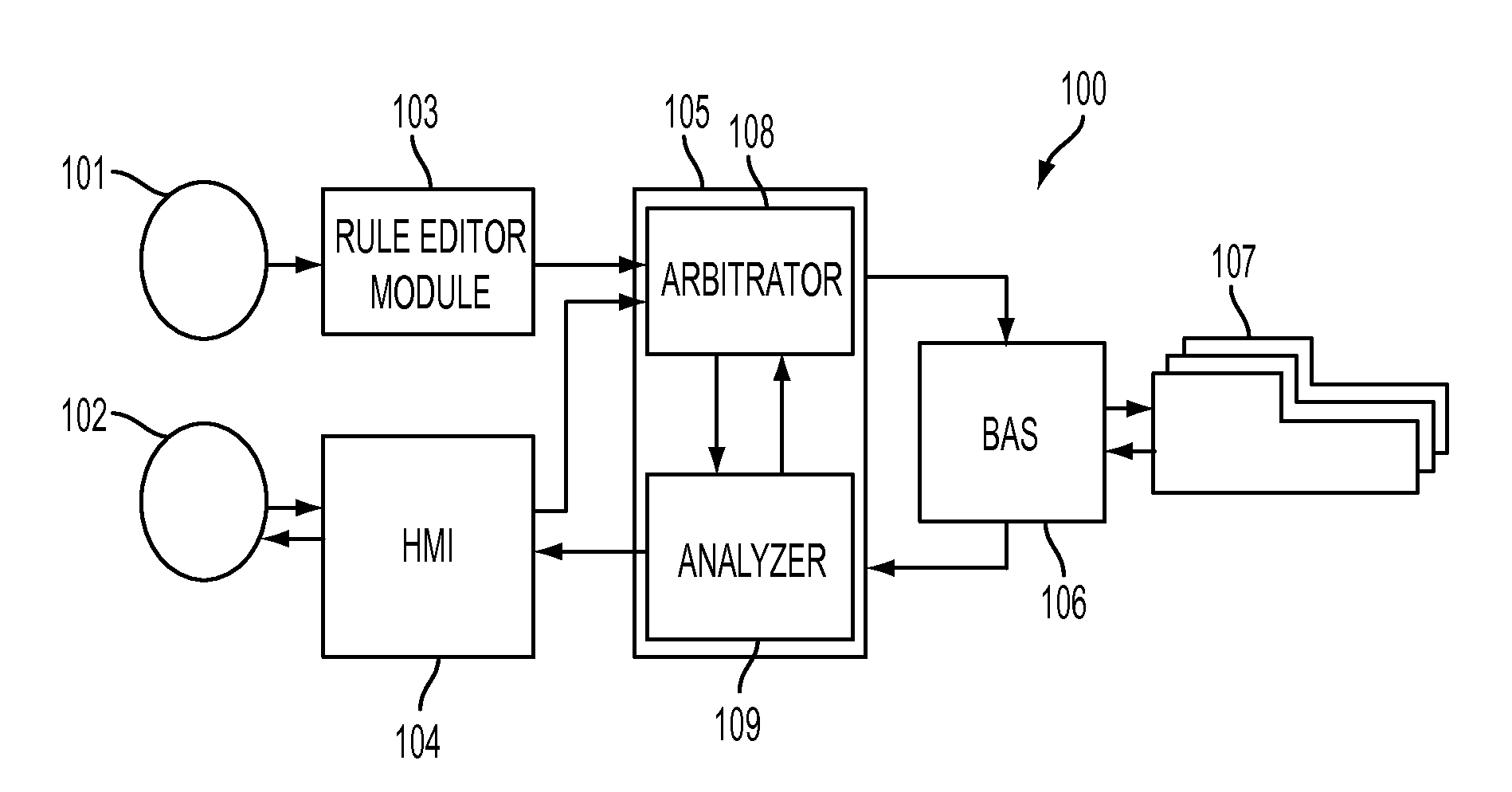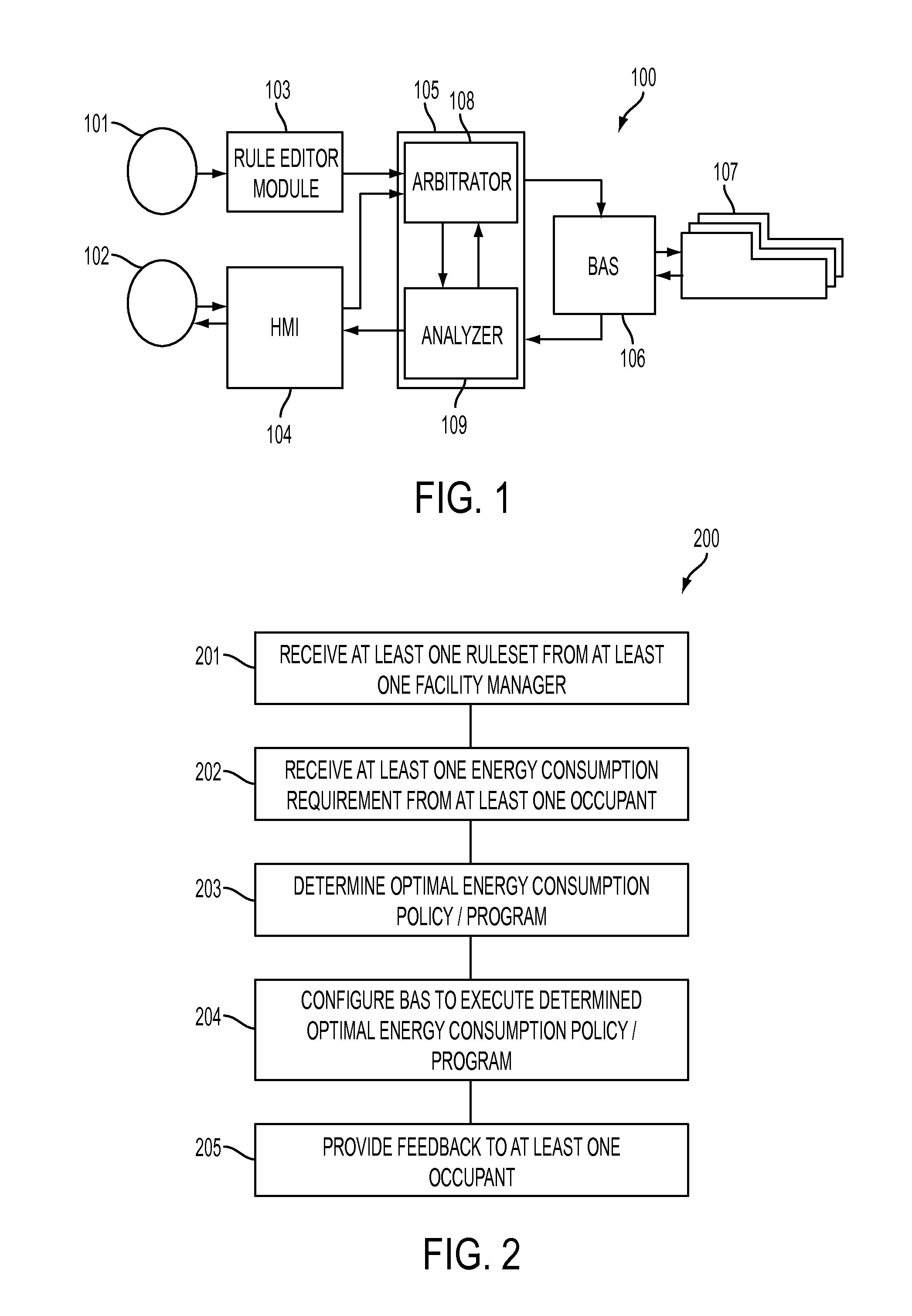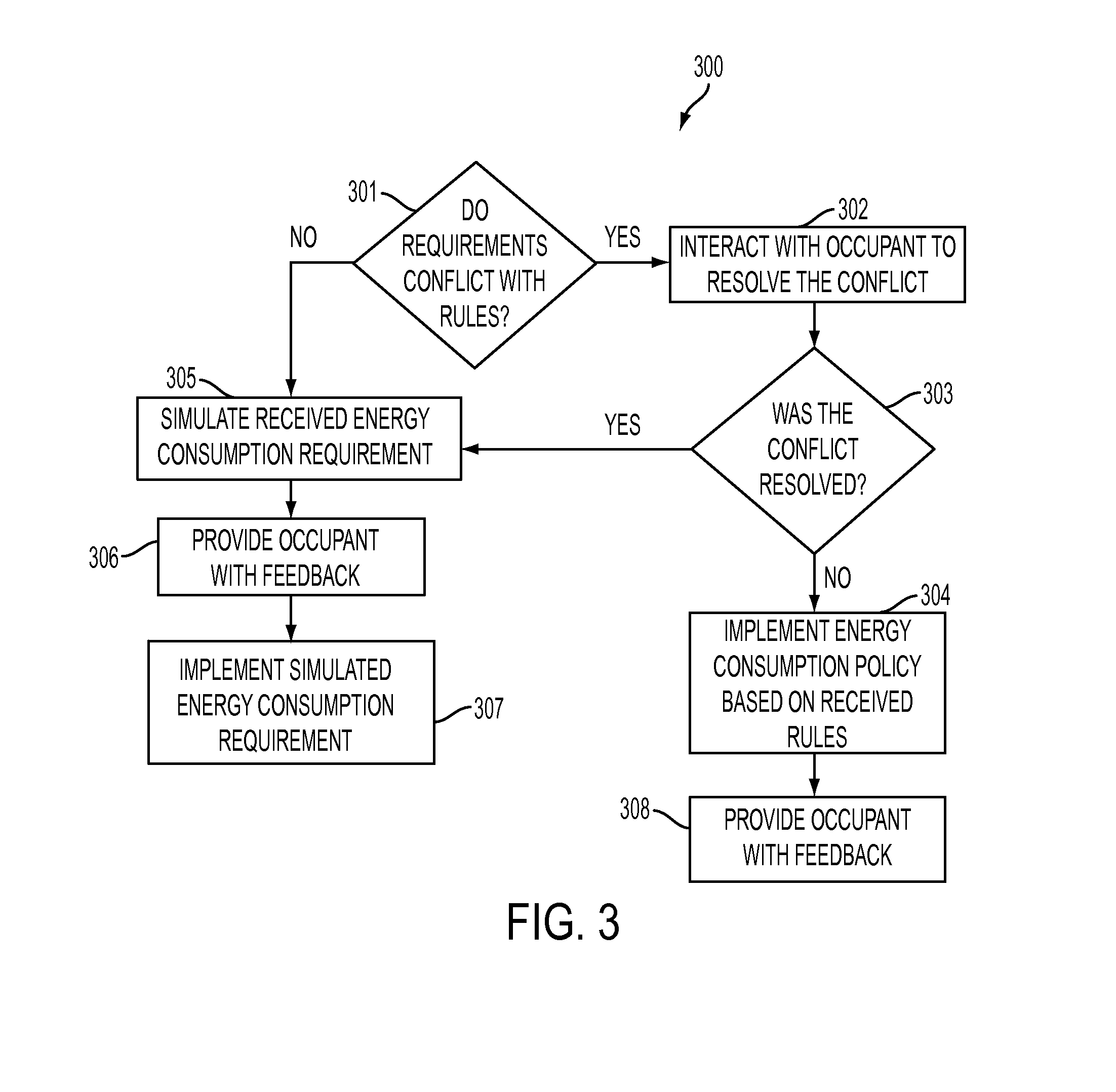Method and system for energy efficient collaborative high performance building control
a high-performance building and collaborative technology, applied in the field of energy-efficient collaborative high-performance building control, can solve the problems of limited communication methods, occupants and facilities cannot be easily communicated and collaborated, and there is no systematic approach or tool to facilitate communication and collaboration between occupants and facilities. achieve the effect of maintaining efficient energy consumption and energy-saving building control
- Summary
- Abstract
- Description
- Claims
- Application Information
AI Technical Summary
Benefits of technology
Problems solved by technology
Method used
Image
Examples
Embodiment Construction
[0013]The present invention provides a method and system for energy efficient building control for commercial buildings. Embodiments of the present invention provide for a method and system that allows facility managers and occupants to collaboratively define energy policy for building energy control. The Collaborative Building Control (CBC) system collects energy consumption requirements as inputs from occupants and facility managers, resolves conflictive requirements, and provides detailed commands to a Building Automation System (BAS), in order to optimize energy usage.
[0014]FIG. 1 illustrates an exemplary CBC system 100 for energy efficient collaborative high performance building control. System 100 includes at least one rule editor module 103, at least one human-to-machine interface 104, and a simulation-enabled analytical engine 105 configured and operable to communicate with a Building Automation System (BAS) 106 of at least one building 107.
[0015]According to an advantageous...
PUM
 Login to View More
Login to View More Abstract
Description
Claims
Application Information
 Login to View More
Login to View More - R&D
- Intellectual Property
- Life Sciences
- Materials
- Tech Scout
- Unparalleled Data Quality
- Higher Quality Content
- 60% Fewer Hallucinations
Browse by: Latest US Patents, China's latest patents, Technical Efficacy Thesaurus, Application Domain, Technology Topic, Popular Technical Reports.
© 2025 PatSnap. All rights reserved.Legal|Privacy policy|Modern Slavery Act Transparency Statement|Sitemap|About US| Contact US: help@patsnap.com



